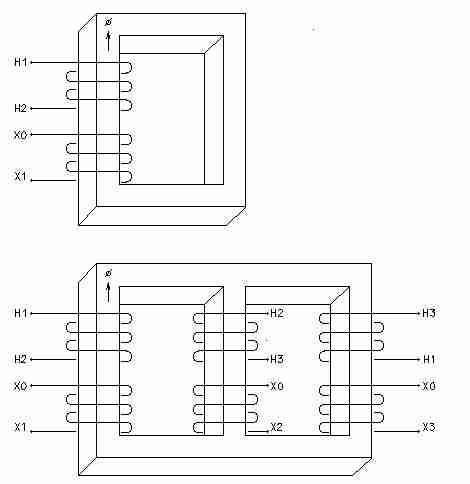I was asked to look into a grounding issue inside a substation because of circulating ground currents.
The incoming service is 13.8kV 3 phase, 3 wire. There are 4 step down delta-wye transformers with neutrals grounded to station ground.
The problem is with a single phase 13.8kV-208V step down transformer which was replaced recently from an ungrounded secondary to grounded secondary because the inspector said so, following NEC.
Part of the problem is that the transformer was specified without a center tap so they grounded one secondary terminal. Is there a correct terminal to be grounded considering that the other 3 ph transformers' wye secondary terminals are also grounded? If the polarity of the 1 ph tx is subtractive, will the connections be reversed.
If the wrong terminal is grounded, isn't it equivalent to inducing common mode supply on the secondary which can cause leakage currents even if the tx is not loaded.
I think the above best explains why most residential tx have center taps. The transformer is forced to be balanced at the secondary and there's no room for mis-application.
The incoming service is 13.8kV 3 phase, 3 wire. There are 4 step down delta-wye transformers with neutrals grounded to station ground.
The problem is with a single phase 13.8kV-208V step down transformer which was replaced recently from an ungrounded secondary to grounded secondary because the inspector said so, following NEC.
Part of the problem is that the transformer was specified without a center tap so they grounded one secondary terminal. Is there a correct terminal to be grounded considering that the other 3 ph transformers' wye secondary terminals are also grounded? If the polarity of the 1 ph tx is subtractive, will the connections be reversed.
If the wrong terminal is grounded, isn't it equivalent to inducing common mode supply on the secondary which can cause leakage currents even if the tx is not loaded.
I think the above best explains why most residential tx have center taps. The transformer is forced to be balanced at the secondary and there's no room for mis-application.


